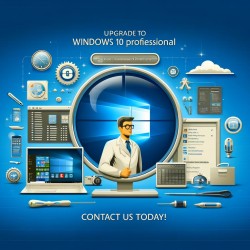
Transferring a Windows 7 installation to a new PC equipped with the latest hardware is not easy if not impossible. This gets serious especially in cases where you decide to replace the hardware after 6 or 7 years of continuous work to upgrade to the latest generation with better performance. The incompatibility of the software with the hardware is one of the reasons why even a clean installation of Windows 7 on new generation hardware is hardly feasible and on the practical side it is basically a vain choice for many reasons. It is clear that after Windows 7 something went wrong but this is another post. Another problem, no less, concerns the software installed during all the time we spent working with our WorkStation, either for one reason or another, starting from a clean Windows installation and then reinstalling all the previously used software from scratch is a bit dramatic and would prevent us from being as operational as before. The lack of drivers for Windows 7 to support new devices such as NVMe disks or the new USB 3 controllers brings the curtain down on what in my opinion to date has been the best Microsoft operating system ever created for the non-professional line. And so on ! What solution to migrate to a new generation hardware platform ?
Luckily, there are high quality application packages, moreover free of charge, able to simplify the life of a professional user, I am talking about Oracle's VirtualBox. This software makes it possible to create virtual machines capable of running almost all existing operating systems. Thanks to this software it is possible to transfer our working environment to practically any other system, as long as it has the same or higher hardware resources than the native system.
The migration consists of a few simple macro steps:
1) Download and install Oracol VirtualBox on the new hardware and disk2vhd on the old one
2) Launch from the command line disk2vhd and proceed to clone the system disk of your workstation without forgetting to uncheck the use vhdx option
3) Transfer and assign the file related to the virtualized disk, on the new hardware where you will have VirtualBox ready maybe on Linux or God forgive us Windows 10
The basic options that will allow your cloned system to boot up on the Virtual Box are few, assign enough ram memory at system startup, select the chipset to emulate from the two available options. VirtualBox allows you to mount common folders between the virtual and the physical system in order to simplify the exchange of files and data between the two systems. In this way, migration between the old and the new simply takes place without any trauma and without any time problems, since both systems are always operational without considering that no one prevents you from continuing to use Windows 7 on the virtual machine.
Software used for migration:



Leave a Comment